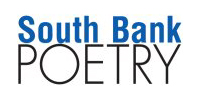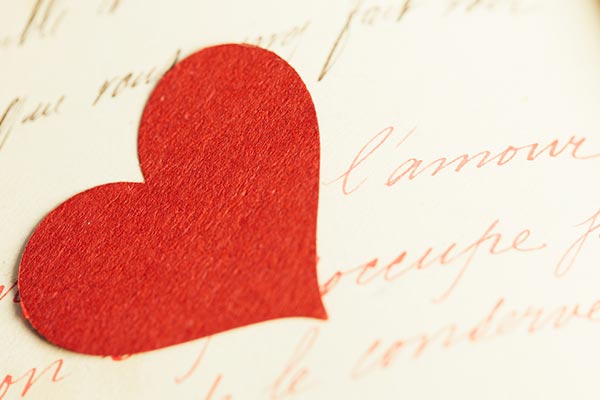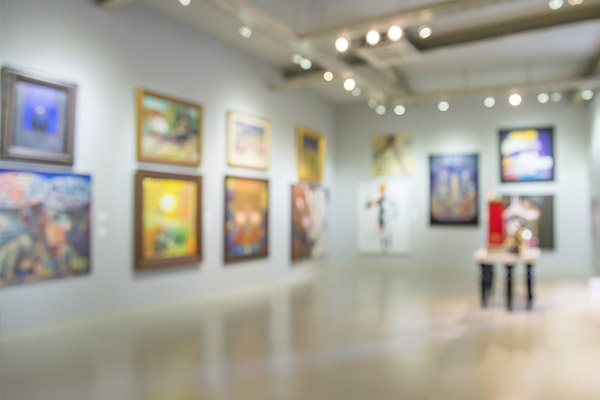10 of the best poems about Museums and Exhibitions
South Bank Poetry’s poem of the month is tenfold: as the year 2021 still keeps us away from museums and exhibitions, we look at ten of the best poems about the experience of engaging with art and objects, of feeling the sheer humanity within.
These poems about museums really are about longing, desire, lust and loss, about violence and beauty and joy; their authors muster a wide range of poetry techniques to bring these emotions alive on the page. They also push us to reflect on the responsibility museums bear in telling the history of mankind.
“Madrid, Prado Museum”, M. K. Joseph
https://poetryarchive.org/poem/madrid-prado-museum/
“Madrid, Prado Museum” is a poem by British-born New Zealand poet and novelist M. K. Joseph. It was published in Inscription on a Paper Dart: Selected Poems 1945-1972 (Auckland University Press/Oxford University Press, 1974). It tells of a visit to the Prado museum, in which the narrator is at once a museum-goer and an omniscient observer of other visitors.
Under its classical varnish, the poem is a deep, keen observation of the human experience. The first two stanzas consider other museum-goers: two clergymen absorbed in a Greco, a blond woman in front of a Rubens. The narrator is omniscient; one clergyman dreams of breeze in the madrilene heat, the woman nurses the wound of her failed marriage. The third and fourth stanzas turn to the paintings, as if the narrator was just now accepting his place as a regular visitor. But the gaze remains firmly focused on the people: the man in white standing, arms outspread, in front of the firing squad of The Third of May 1808 (Goya, 1814); the maids of honour in the eponymous Las Meninas (Velazquez, 1656) doting on the princess, who looks straight at the viewer as if into a mirror.
“Madrid, Prado Museum” is a poem of regularity and form. It is composed of four eight-line stanzas and one quatrain, with a simple rhyming scheme (abab, cdcd, etc.). However, the very last word, “home”, does not rhyme: it sounds out of place, leaving us with the clashing idea of the museum being an “eternal home”. A home where all pain is preserved: the fear of the man in front of the firing squad, the grief of the woman who travels Europe alone.
“Objects”, W. H. Auden
https://miro.medium.com/max/638/1*vk5eEMPeqlb43Gr8FGKJ4w.png
In “Objects”, the Anglo-American poet (W. H. Auden 1907-1973) also explores the idea of objects as holders of grief and wonder. We can imagine the narrator of this poem contemplating artifacts shown in a museum, feeling their “tearless” “longing”, the “bestial substance” of their soul.
Auden has chosen the form of the sonnet, one that is traditionally concerned with love, to speak of the pain contained within these “wordless creatures”. But his rhyming scheme is somewhat unusual (abab cdcd efg efg): a combination of the Shakespearean sonnet (abab cdcd efef gg) and the Petrarchan form (abba cddc efgefg), as explains Derek Attridge in this article about Paul Muldoon’s poetry. The result is a short, neat poem that encapsulates its subject matter in a flawless, yet original showcase.
“In the British Museum”, Thomas Hardy
https://www.poemhunter.com/poem/in-the-british-museum/
“In the British Museum”, by British poet and novelist Thomas Hardy (1840-1928), is a dialogue between two museum-goers looking at a stone, or more precisely at “the base of a pillar” that comes from the hill of Areopagus, in Athens.
In this poem, too, the object is more than what it seems, animated that it is by the human souls that have lived near it, travelled through it. In this case, the first visitor wonders what his companion sees, or rather hears, “in that time-touched stone”, where he himself sees only “ashen blankness.” And the companion, who knows “but little”, says he can hear the voice of Paul, the apostle, preaching to the crowds of Athens, echoing through the stone. This idea of the echo is rendered through the repetition of the phrase “the voice of Paul” in the fourth and seventh quatrains, closing the poem.
In the British Museum is a moving testament to the immediacy of artifacts: one can know not much, and still hear the soulful memories encapsulated within.
“Meditations on the British Museum”, Daljit Nagra
https://pandanarium.tumblr.com/post/188095235321/meditations-on-the-british-museum-and-get-off
About the British Museum, contemporary British poet Daljit Nagra (born 1966) wrote a more cerebral and reflexive poem, one that interrogates Britain’s legitimacy in keeping and showcasing objects far away from their “native halo”.
“Meditations on the British Museum” is a four-part free verse poem published in British Museum, Nagra’s fourth book (Faber & Faber, 2017). The free verse form lends itself to the “meditations” of the visitor, a stream of consciousness that first takes in the shape of “our house” that is the museum, then moves on to the works of art from Rhodes, from Burma, that are shown to “kids from the segregated schools”. In the third and fourth parts, the narrator reflects on the crimes of colonisation, and the ways in which the victors get to write (art) history.
Interestingly, the last sentence of the poem echoes the closing idea of “Madrid, Prado Museum”: the concept of home. “We’re at home, albeit lost, while roaming among our kind in Cuerdale, Yarlung, Shang, Ashanti, Aulong, Kush, Thule, Ur”, writes Nagra. The museum is “as nation”, yes, “a fragment of varnished Britannica”, but it is also a “guardian” of “monumental mankind”’s legacy. In the end, the poem seems to say, museums are about the shared humanity of the objects we put in them.
“Voyage of the Sable venus”, Robin Coste Lewis
“Voyage of the Sable Venus” is a 79-page long poem, published in the eponymous debut collection of American poet Robin Coste Lewis (Alfred A. Knopf, 2015). It is a narrative, conceptual poem that functions as a catalogue of Western depictions of Black women in art.
As explains Lewis herself, the poem is “comprised solely and entirely of the titles, catalog entries, or exhibit descriptions of Western art objects in which a Black female figure is present, dating from 38,000 BCE to the present.” The list seems endless, it is dizzying, fragmenting the subject matter in a kaleidoscopic way, effectively showing how — literally — objectified these women were, are. Lewis also embraces the horror of the racist vocabulary of slavery, erasing the “sanitized, but perhaps equally vapid African-American” that had replaced the original phrasing.
A journey through the immaterial museum of the West’s art history, this poem casts an unwavering light on its actual and symbolic violence.
“How to Look at Pictures”, Rebecca Morgan Frank
“How to Look at Pictures” was published in The Spokes of Venus (Carnegie Mellon University Press, 2016), a collection of poems by American poet Rebecca Morgan Frank that explores the points of view of different creators (magicians, wig makers, sculptors, perfumers, choreographers, composers), as well as the tension between “the act of making and the act of observing”.
“How to Look at Pictures” is a 22-line free-verse poem that directly addresses the museum-goer, urging them to refrain from looking for the humans underneath the subjects. Refuse to make eye contact, try not to consider what happens to them, the poem urges. Beware of the feelings, beware of the pain, it means. The use of the second-person, paired with the imperative, lends the poem a tone of urgency, of plea. The narrator fails to heed their own advice, of course, as the poem lands on a girl whose lips have been painted shut.
In the end, looking at a picture can never be devoid of a narrative, Frank suggests, and its pain is inescapable.
“In the Austrian Museum of Applied Arts”, Helen Farish
This short, three-stanza poem was published in 2016 as part of the collection The Dog of Memory (Bloodaxe), by British poet Helen Farish. In it, the titular memory lives on in a stool kept at the Austrian Museum of Applied Arts, conflicting with what the visitors might imagine.
The poem’s structure is simple, efficient: in the first seven-line stanza, the narrator imagines a pastoral scene of falling trees, a young boy gathering fruit in his pockets. The next three lines zoom out to show what the narrator has been looking at: a stool, taken from a convent. In the third, eight-line stanza, imagination and memory collide, as the stool summons the recollections of a (imaginary) nun, wondering why, of all objects, it is this one that survived.
Between the lines, this bittersweet poem interrogates the arbitrary nature of our museums: how do we decide what can bear testimony to the lives of others?
“Museum”, Richard Scott
“Museum” is part of the debut collection Soho of British poet Richard Scott (Faber & Faber, 2018). It is at once an erotic poem, exploring the attraction the narrator feels towards the marble sculpture of a young man, and a heart-stopping reflection on the vulnerability of queer bodies.
The statue in “museum” is fragmented, mutilated, missing limbs, but beautiful, desirable, lovable. The free-verse poem is made up of short lines, fragmented themselves, their cesuras cutting up the rhythm of contemplation and desire, mimicking the outpouring of thoughts and emotions the narrator is experiencing. As it leaves the statue behind, the poem also sees a “narrative” in this marble body, imagines a story of loneliness, of centuries without touch.
“museum” is a breathless poem of love and lust and pain, of being queer and feeling alone against the world.
“In the Museum of Lost Objects”, Rebecca Lindenberg
https://www.poetryfoundation.org/poems/55526/in-the-museum-of-lost-objects
“In the Museum of Lost Objects” is also a poem about love, in a way, about the love we keep for the things that never came true. A part of the collection Love, an Index, by American poet Rebecca Lindenberg, this poem treats equally what has been lost and what has never been.
The poem is made up of thirteen couplets — fourteen including the epigraph by Ezra Pound –, a simple, flexible form that meanders through the huge empty rooms that attempt at showing the absence of objects long gone (bones, a painting, a vellum gospel, salts from the Levant). Visiting this museum of loss, the narrator draws a parallel with the poems her love will “now never write”, the unborn works of art that still deserve their own cabinet, their careful preservation. This is a subtle poem about grief, one could argue, about all the potentialities that are lost when someone leaves. The museum, then, is a place to safekeep what could have been.
“Having a Coke with you”, Frank O’Hara
https://poets.org/poem/having-coke-you
“Having a Coke with you” is a poem American Poet Frank O’Hara wrote in 1960; initially published in the small magazine Love, it was later included in the book Lunch Poems in 1964 (Lawrence Ferlinghetti’s City Lights). “Having a Coke with you” is a spontaneous, conversational poem the poet addresses to the one he loves; it is also a light-filled, joyful reflection on the superiority of life over art.
As the giddiness of love outshines all other beauty, portraits become “just paint”, statues become “solemn” and “unpleasantly definitive”, a visit at the museum ceases to make sense. In the poem’s most enchanting passages, the narrator even feels sorry for the artists, the Impressionists who had to study their trees all by themselves, “cheated of some marvelous experience”. In “Having a Coke with you”, the object of the love becomes a work of art in her own right, begging a question that sounds like it is directed at the poet himself: what is art-making good for, if the life of the artist is not well-lived?
And what good is the beauty of museums for, if we don’t have anyone to share it with?
Why not try writing a poem of your own at one of our classes. Click here.





